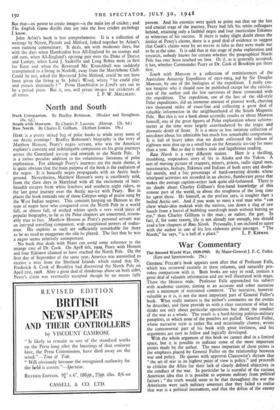Cricket
IF Holmes had not been quite such an intellectual snob and Watson had not been quite such an ass we should undoubtedly know the solution to one of cricket's most tantalising mysteries—why Alletson refused to hit. By 2.30 on a summer afternoon in x911 at Hove, Alletson of Notts had made 5o runs. Fifteen minutes later he had made a hundred. Fifteen minutes later still he had made 189— 139 runs in thirty minutes, or at the rate of 278 runs an hour. In future innings, apart from one clout at Lord's for six, he stone- walled and was finally dropped from the side. In The English Game you can read how this inexplicable behaviour distressed A. 0. Jones, the Notts skipper. "The man can't be normal," said Jones. I've told him that I will play him in every match right through the season even if he makes recurrent ciphers, as long as he will hit, but he just won't 45 it."
This was a problem right up Holmes' street. I have not the slightest doubt that he spent 4 full day at Lord's investigating it and discovered that Alletson, having in early days fallen foul of the Mormons and gone into hiding, was alarmed at the publicity his hitting had brought him and was seeking renewed anonymity as a stonewaller. But if Holmes had mentioned this to Watson the news would have been all over the evening papers—which might have put Alletson in danger again and, worse, would have lowered Holmes' reputation in his own eyes. He'd got dragged into racing over that Silver Blaze case, dragged again into sport when that three-quarter was missing—and Mycroft had looked down his nose ever since. So after solving the mystery at Lord's, Holmes came back with some cock-and-bull story about having spent the day disguised as a groom in order to get the low-down on the private life of a family in the suburbs ; and Watson, as usual, swallowed the story whole. So, for us, the mystery remains.
Cricket fact and cricket fiction are nicely mingled in The English Game. Brigadier Gerard trying bodyline, the lying Mr.. Dingle describing his timeless Test with Colonel Sir Thomas Blazo, Robert Lynd describing Bradman's great 193o innings at Lord's, Robertson:. Glasgow writing about Woolley—it is hard to say what in cricket is fact and what fiction; I saw Spooner bat. Yet I can't believe he ever existed. No one as glorious as he could exist outside imagination.
But that—iti power to create images—is the main joy of cricket ; and The English Game distills that joy into the best cricket anthology I know.
John Arlott's book is less comprehensive. It is a collection of writings by Nyren, Pycroft and Mitford, linked together by Arlott's own running commentary. It deals, not with moderner days, but with the days when Hambledon beat All-England by an innings and x68 runs, when All-England's opening- pair were the Duke of Dorset and Lumpy, when Lord J. Sackville and Long Robin went in first for Kent and when the Reverend Mr. Knatchbull was suddenly transplanted to a living in Norfolk, away from the Marylebone Club. Could he not, asked the Reverend John Mitford, could he not have been given the living at St. John's Wood, where " he could play and preach alternately ? " From Hambledon to Lord's sets out to be a period piece. But it, too, will create images for cricketers of



































 Previous page
Previous page